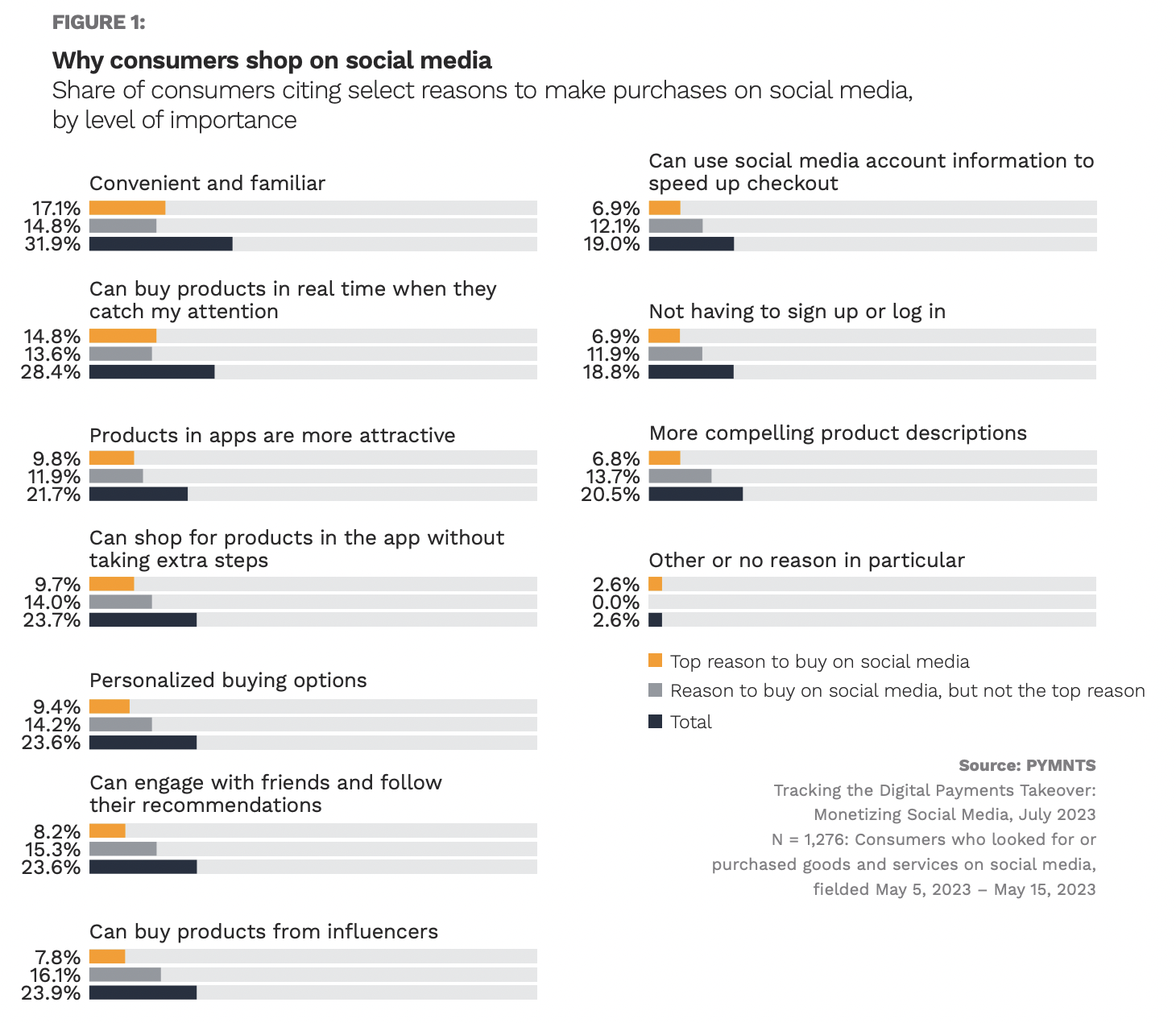Consumers Turn to Social Media for Impulse Purchases

When consumers shop on social media apps, PYMNTS Intelligence research has found, they are often making impulse purchases, buying items that strike their fancy in the moment.
By the Numbers
The PYMNTS Intelligence report “Tracking the Digital Payments Takeover: Monetizing Social Media,” created in collaboration with Amazon Web Services, drew from a census-balanced survey of nearly 3,000 U.S. consumers to understand the factors driving them to shop on social media, among other matters.

The study found that social media shopping is driven by spur-of-the-moment decisions. One of the attractions of this shopping method lies in the simplicity and convenience it offers consumers in seamlessly transitioning from browsing to purchasing: individuals can quickly and effortlessly buy products in the moment they discover appealing items.
Twenty-eight percent of consumers who transact on social media say they do so because it allows them to buy with less effort and as soon as the product catches their attention, making this the second-most common reason consumers use the shopping channel, just behind convenience and familiarity.
The Data in Context
Certainly, social media platforms are looking to drive consumer spending. TikTok, for instance, recently began testing a new feature that aims to make all videos posted on the platform shoppable, allowing viewers to easily find and purchase products featured in videos.
Yet not all efforts to this end prove to be successful. Last year, for instance, Meta announced that Instagram would stop offering its users live shopping and would drop its Instagram Shop tab.
The landscape of consumer behavior continues to evolve, with social media platforms playing an increasingly significant role in driving impulse purchases. The findings from the PYMNTS Intelligence report underscore the allure of seamless shopping experiences offered by these platforms, where individuals can swiftly transition from discovery to acquisition with minimal effort. As consumers continue to embrace the convenience of social media shopping, businesses must remain agile, adapting strategies to cater to this demand.
